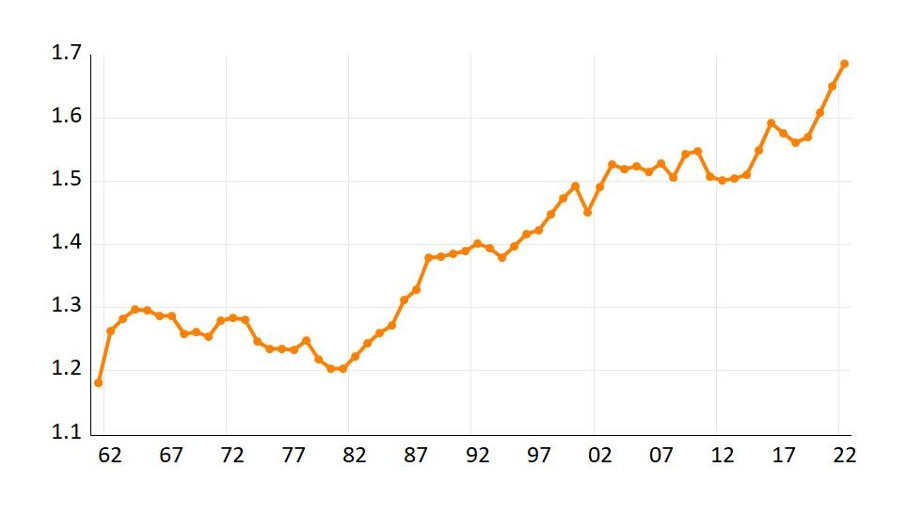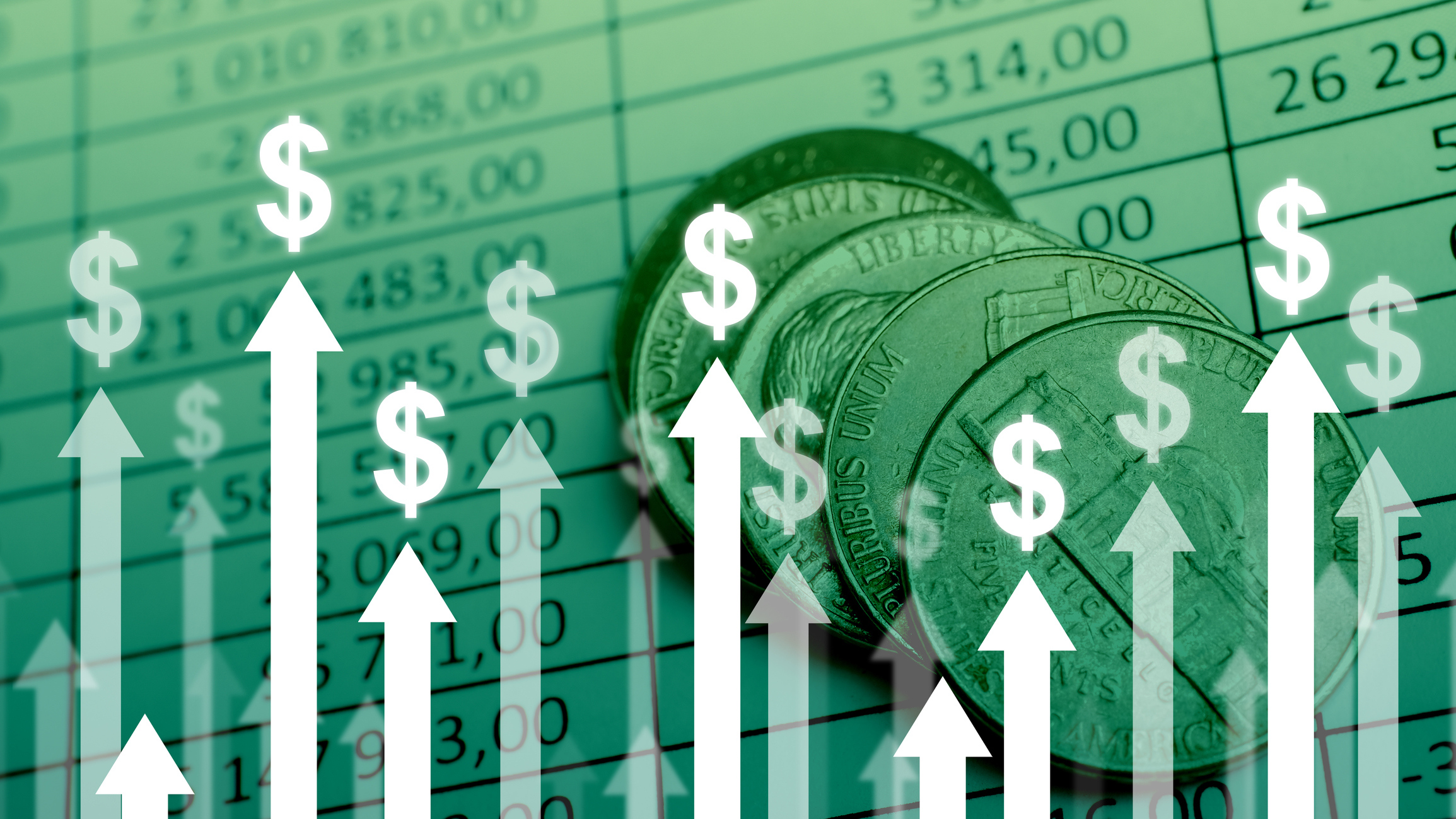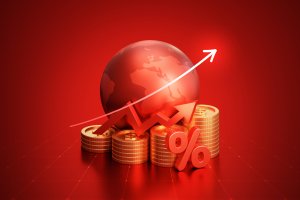To what extent is profit-led inflation compatible with what we know about the price-setting behavior of firms and income distribution?
There is a growing consensus that the price increases of the last three years can be attributed mostly to profits while the change in nominal wages has been relatively small. As a result, the share of profits in national income has increased. This type of inflation has been given different names such as profit-led inflation or seller’s inflation (e.g., in this recent well-known piece by Isabella Weber and Evan Wasner).
An interesting question that follows is to what extent this situation (inflation stemming from profits and increases in the profit share) is compatible with what we know about the price-setting behavior of firms and income distribution. We discuss this question with reference to a recent piece by Marc Lavoie which is critical of the profit-led inflation story. Lavoie bases his criticism on two points.
- Because of the existence of overhead (fixed) costs, as an economy recovers - and capacity utilization increases - unit total cost tends to decrease. If firms set their price as a markup over unit variable cost, the profit share tends to increase; it also follows that the markup over unit total cost will also increase.
- Markups (and profit margins) are not equivalent to profit shares. A common assumption in Structuralist/Kaleckian macroeconomics (which can also be found in some new-Keynesian models) is that firms set their price as a constant markup over the unit variable cost of production. If this is the case, when the unit material cost (e.g., imported intermediate inputs) increases relative to the unit labor cost, the profit share will increase even if the markup remains constant.
Both points are technically correct, but they do not negate the profit-led inflation approach. Regarding the first point, profit shares do increase in the early periods of the business cycle due to the existence of fixed costs. Thus, part of the increase in the profit share and the markup over unit total costs in the last three years could have been due to this effect. However, it is unlikely that much of the observed spike in the profit share can be explained in cyclical terms. The recovery of the last three years has been extraordinary (especially in the US), but if we look at different measures of the cycle (utilization, employment to population ratio, employment rate) the economy is back to where it was before the pandemic, while markups and the profit share are (under certain measures) way above. Moreover, unlike previous cycles, the recession of 2020 did not see a meaningful drop in the profit share (the increase in the share of wages was mostly due to the increase of government transfers to workers). Finally, the increase in the profit shares in a recovery due to fixed costs is not inflationary—if anything it is the opposite.
Regarding Lavoie’s second point, his criticism is based on the premise that profit-led inflation requires an increase in markups. However, this is not the case and therefore profit-led inflation is less “controversial” than he suggests (the title of his column is “Some Controversies in the Causes of the Post-Pandemic Inflation”). In other words, profit-led inflation is compatible with the markup story. To understand that we can retrace and rephrase the first two steps in Weber’s and Wasner’s paper:
- There is an initial cost-push. For example, an increase in the price of oil, in commodity prices, or in the cost of transportation, as we have witnessed in the wake of the pandemic. Note that because prices in these sectors are determined in global markets markups are endogenous and increase (Lavoie mentions the oil sector as an example of this kind of endogenous markup). Market mechanisms can also lead to higher prices - and therefore an endogenous markup - in other sectors that face bottlenecks.
- Given the importance of these sectors for the rest of the economy the cost-push is propagated by firms in an effort to protect their profit margins along the lines of the usual markup pricing equation. There can be some firms that might try to take advantage of the situation and increase their markups, but this is not a necessary condition for this type of inflation.
Since prices do not adjust instantaneously and simultaneously in all sectors, and there are input-output connections between different sectors, if the initial cost-push is large and persistent (as it has been recently) it can lead to persistent price increases.
Thus, there are two forces that have led to inflation: i) the initial cost-push and ii) the pricing behavior of the firms that protect their profit margins. This is consistent with the Kaleckian markup story but also with the narrative of profit-led inflation: a cost-push-profit-led inflation.
One can quibble with the semantics. Is the term profit-led right? One advantage of the term is that it emphasizes the distributional source of inflation; specifically that in the face of a large increase in import prices profit margins are maintained while all the burden of the adjustment is borne by real wages. Ignoring this distributional aspect naturalizes the claim of corporations on output.
Of course, profit-led inflation cannot go on forever. This would mean that the wage share would converge to zero, which is absurd from a logical and theoretical, but also a practical point of view: labor will at some point react against price increases. In the current situation and absent further import-price shocks, either the rate of inflation will subside or there will be a push to increase wages which might push prices further up and propagate inflation further. This is the usual conflict-inflation scenario, which again is consistent with the Structuralist/Kaleckian theory of inflation and is also mentioned as a potential third step in Weber’s and Wasner’s story.
At the same time, the fact that the wage share cannot converge to zero does not mean that it should be treated as stable over the long run. Over the last decades profit shares have increased in most developed economies and this increase has been accompanied by a secular increase in the markup of the firms.
In terms of the Structuralist/Kaleckian analysis, the exogenous markup does not mean that markups and profit shares are overall constant, but rather that they are determined by institutions and social norms outside of the economy along the lines of classical political economy. The increase in the markup and the profit share has been the result of a change in these institutions and social norms against labor.
These secular trends (increase in the profit share and markups) are important to consider in the current context for several reasons. First, firms being able to pass through the increase in material cost without much reaction of wages is another manifestation of the weakening position of labor. Second, the weak position of labor also casts doubt on the possibility of conflict inflation with wage and price increases compensating for each other. Finally, an increase in the markups that would amplify price shocks (on top of the protection of the markups) would be consistent with these trends.
Has there been an increase in markups over the last three years? This is an empirical question. There is some preliminary evidence that this might be the case (e.g., Konczal and Lusiani 2022, Glover et al. 2023 but also some case studies in Weber and Wasner), but more work needs to be done.
We are working towards that direction in a forthcoming paper. Figure 1 (from that paper) presents a preliminary estimate of the average markup of the firms in the Compustat database until 2022. Our calculations follow the methodology of De Loecker et al (2020) and Konzal and Lusiani (2022). As we can see the average markup continued to increase in 2022. At the same time, our still preliminary results suggest that in 2022 the increase in the markups was not as broad-based as in 2021. Part of the increase in the average markup is due to firms with higher markups increasing their market share.
Figure 1: Average Markups, 1961-2022

In conclusion: i) in principle the cyclical recovery of profits can explain part of the increase in the profit share in the wake of a recession, but it is unlikely that it can explain much of the recent increase; ii) the structuralist/Kaleckian theory of pricing and distribution is not as different from the seller’s/profit-led inflation as Lavoie argues. A significant part of the increase in the profit share over the last year has been due to firms passing the increasing cost of imports to prices without much resistance from labor; iii) these two sources of increase in the profit share do not negate the possibility that some firms and sectors also increased their markups; iv) as more data become available more empirical work is needed that would quantify these different sources of price increases (a point also stressed by Weber and Wasner); v) towards that direction in a forthcoming paper, we estimate the markups for the firms of the Compustat database up to the year 2022. We find that the average markup increased in that year as well.
Profit-Led Inflation Redefined: Response to Nikiforos and Grothe







